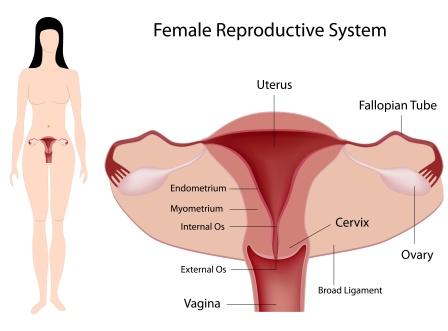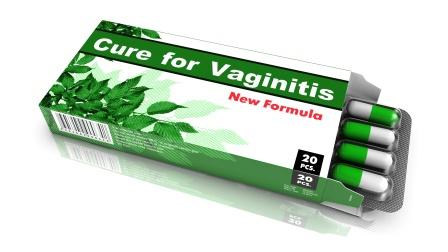Vaginitis: Ayurvedic Treatment, Medicines, Home Remedies
Article By Prof. Dr MS Krishnamurthy.
Ayurveda offers effective home remedies, lifestyle tips and treatment (both oral and local) for the treatment of vaginitis. Herbs like neem, turmeric play a vital role in the treatment.
Gynaecological disorders have found its immense importance in the field of medicine due to the fact that women have a unique function of giving birth. In Ayurveda, women care is dealt in separate section, where the term Yoni Vyapath includes majority of gynaecological disorders.
20 Yoni Vyapath from various texts of Ayurveda may be classified into four categories i.e.
- Inflammatory diseases
- Dysfunctional uterine diseases
- Sterility and habitual abortions and
- Anatomical defects

The term Vaginitis is the diagnosis given to women who complain of abnormal vaginal discharge with vulvar burning, irritation or itching. It is one of the most frequent reasons for patient visits to the gynecologist.
The most important causes of the symptom vaginal discharge are:
- Bacterial vaginosis
- Candidiasis and
- Trichomoniasis
The majority case of vaginitis is Bacterial Vaginosis. The exact incidence of this infection is not known as 50% of the women are asymptomatic. However, it is estimated to be around 40 – 50% in women of childbearing age.
The second most common type, the vulvo-vaginal Candidiasis accounts for 20-25% of Vaginitis in women and the incidence of Trichomoniasis infection is about 10-15%. A change in the balance of the yeast and bacteria that normally live in the vagina can result in vaginitis. This causes the lining of the vagina to become inflamed.

Table of Contents
Prevention tips
Tips to prevent vulvovaginitis:
Avoid using public swimming pools, hot tubs.
Use only a mild soap. Avoid strong soaps.
After applying soaps, rinse thoroughly.
Soon after bath, dry the area thoroughly.
Avoid local application of deodorants and other irritant skin creams.
Always get an opinion from gynecologist about what to apply and what not to.
Wipe or wash from front to back after using the toilet. This will prevent infestation of vagina with minute fecal matter.
If you are too much sweating, consider changing under garments twice a day.
Use a cotton undergarment which would absorb moisture readily.
Ayurvedic home remedies
Ayurvedic home remedies for vaginitis:
1. Make a powder mix of
Neem – 1 part
Turmeric – half part
Triphala powder – 1 part. (easily available in any herbal store)
Mix this and apply as dusting powder, after bath.
The same combination can also be taken orally, in a dose of half – 1 teaspoon, with honey or water, once or twice a day. (Ask your Ayurvedic doctor for advice).
2. Use this water for bathing or at least as last shower – Easy Ayurveda Home Remedy For Daily Skin Detox
Vaginitis as per Ayurveda
Ayurveda refers a condition by name Kaphaja Yonivyapath which closely resembles with the condition of Vaginitis.
Kaphaja Yoni Vyapath is mentioned as one among the 20 Yoni Vyapath referred by the primordial literatures of Ayurveda, the Bruhathrayees.
Kapha dosha vitiated due to excessive use Abhishyandi (oily and blocking agents) substances reaches reproductive system and causes Pichhila (slippery), Sheeta (cold), Pandu Varna (pallor),Yoni Srava (vaginal discharge), Kandu (itching) and Alpa Vedana in yoni (mild pain in the vagina).
Some of the ayurvedists equate Shlaishmiki Yoni Vyapath with Kaphaja Pradara too which will be discussed in future write ups.
Factors that can change the normal balance of the vagina are – frequent/excess use of antibiotics, douching, spermicides, sexual intercourse, breast feeding, and changes in hormone levels due to pregnancy and menopause, as per modern medical texts.
Read related: Ayurvedic treatment for vaginal white discharge
The current treatment protocol in the contemporary science advice the use of antibiotics and synthetic hormone preparation, which have their own side effects like- secondary infertility, bleeding per vagina, infection and it may also destroy the healthy bacterial vaginal flora. And also they contraindicate the use of vaginal douche as it is one of the risk factor for Vaginitis and further it may cause pelvic inflammatory diseases (PID).
As per modern medicinal system two most common reasons of Vaginitis are infection of Trichomonas vaginitis and Non –specific vaginitis. These two aspects are briefed here for the sake of advanced knowledge about the disease.
Trichomonas vaginitis
Trichomonas vaginitis is caused by Trichomonas vaginalis protozoan.
Mode of transmission
Coitus with infected male partner
Contaminated domestic towels, bed linen and personal clothing
improperly sterilized surgical instruments such as specula
Bath tub, swimming pools etc
Other causes are
Debilitating illness, Antibiotics, etc are altering the vaginal flora, which harbor the manifestation of disease.
Clinical features
About 25% of patients harboring Trichomonas are asymptomatic.
There is sudden onset of profuse vaginal discharge after dating from the last menstruation associated with backache occasionally lower abdominal discomfort
varying degree of irritation and itching within and around the introitus.
Presence of dysurea and frequency of micturition and history of previous similar attack
On examination
There is a thin, greenish, yellow and frothy offensive vaginal discharge.
Erythematic and edema of the vulva and vagina are the evidence of pruritis.
Vaginal examination may be painful.
The vaginal wall become red and inflamed with multiple punctuate hemorrhagic spots are found over the portio vaginalis part of the cervix, that giving the appearance of “strawberry”.
Non specific vaginitis:
During the reproductive period when the vaginal defense is lost, the local pathogens like Staphylococcus, Streptococcus, E. coli etc. produce acute symptoms, like varying amount of vaginal discharge with irritation of the vulva. Foreign bodies like peccary, tampon, IUCD or child birth trauma or vaginal operation predispose to such infection.
Clinical features:
There is varying amount of vaginal discharge, sometimes offensive with irritation of vulva.
On examination:
The color, consistency, and the amount of discharge varies
Vulva may be congested and swollen with evidence of pruritis
Vaginal mucosal is red and tender and swollen
Ayurvedic management of Vaginitis/Kaphaja yonivyapat:
Kaphahara shamana oushadha- internal medication
Sthanika prakshalana-local cleansing
Ayurvedic medicines
Ayurvedic medicines for vaginitis:
Click on the medicine names to know more about the medicines.
Ashokarishta – It is used in Ayurveda treatments for many diseases like Pain menstruation, heavy periods, fever,
Lodhrasava – Useful in white discharge, painful periods, itching etc.
Pushyanuga churna – Available in herbal powder form.
Chandraprabha vati – especially useful when the symptoms are associated with infection.
Arogyavardhini vati – Useful in high Pitta and Kapha conditions.
Triphala guggulu – useful when associated with pain, in high Pitta and Kapha conditions
Nimbadi guggulu – Useful in infection.
Nimbamritadi kashaya – Also available in tablet for, useful in bacterial infection.
Aragwadharishtha – Useful in itching associated with burning snsation
Aragwadha kashaya – Useful both for oral administration and local vaginal douche treatment.
Kathakakhadiradi kashaya – Useful both for oral administration and local vaginal douche treatment.
Sthanika prakshalana-local cleansing treatment:
Vaginal douche or Uttarabasti treatment is administered with below Kashayas – herbal decoctions.
Panchatiktaka kashaya
Panchavalkala kashaya- Its sitz bath is also recommended.
Mahamanjishthadi kashaya
Aragwadhapatra kashaya
Kumbheeka patra/valkala kashaya
Medicinal Yogas for Yoni Roga from Sahasra Yoga Text book
Maha Rasnadi Kwatha
Sukumara Ghrita
Varahyadi Ghrita
Dhanvantara Taila
Sahacharadi Taila
Satavari Guda
Yonisoolahara Kashaya
Amritaprasa Ghrita
Maha Mayura Ghrita
Wholesome Diet and habits
Nutritious food like warm milk, choulayi (red spinach/red amaranthus),ash gourd, bottle gourd etc are recommended.
Unwholesome Diet and habits
During the medication good hygiene of the local area should be maintained. All kind of causative factors are to be avoided. Heavy exercise, day sleep, night awakening, sexual contact, spicy-oily-unctous food and beverages are to be avoided.
Last drop
Dear readers of easyayurveda.com, I am very sure that the information’s furnished above will help you to trace out the causative factors, nature of the illness and probable line of treatment adopted by the physicians followed with encourageable and avoided food and habits in case of vaginitis vis-à-vis Kaphaja yonivyapat. As this is the first kind of manifestation among the vaginal disorders immediate attention if given one can avoid the future complications and grave disorders.
References
Agnivesha. Charaka. Chakrapani Dutta. Sharma R K. Dash V B. Charaka Samhita . 1st ed.Varanasi. Chaukambha Sanskrit Series Office; 2004. Vol 5 p132
Dr K Nishteswar. Dr R. Vidyanath. Sahasrayogam. 2nd ed.Varanasi. Chowkhambha Sanskrit series office. 2008. P9
Acharya Vagbhata. Astanga sangraha of Vagbhata. K R Srikantha murthy.Varanasi.Chawkhamba orientalia. 2009. Vol 3. P 347
Susruta, Dalhana, Acharya J T. Susruta Samhita with the NIbandhasangraha Commentary .1st ed. Varanasi. Chaukambha Sanskrit Samsthan; 2010. p668 -70
Vriddha kashyapa, Vatsya. Kashyapa Samhita with Vidyotini Hindi Commentary. 1st ed.Varanasi. Chaukambha Sanskrit Samsthan; 2009. p160.
Harita, Jaimini P. Harita Samhita with Nirmala Hindi Commentary. 1st ed. Varanasi. Chaukambha Viswabharati; 2010. P463-78.
Madhavakara, Yadunandana U. Madhava Nidana with Madhukosha Sanskrit Commentary.1st ed. Varanasi. Chaukambha Prakashan; 2009. p417.
Bhavamishra, Srikantha K R M. Bhavaprakasha. 1st ed. Varanasi. Krishnadas Academy; 2002. Vol2 p778-9.
Yogaratnakara, Shastry L, Shastry B. Yogaratnakara with Vidyotini Hindi Commentary. 1st ed. Varanasi. Chaukambha Prakashan; 2010. p404-5
Tewari P V. Ayurved prasooti tantra evam striroga. 2nd ed. Varanasi. chaukambha Orientalia; 2007. Vol 2 p19.
Williams M M. A Sanskrit English Dictionary. 1st ed. New Delhi. Motilal Banarasaidass Publishers Pvt Ltd; p 624
Dutta D.C. The text book of Gynecology, Kolkata. New central book Agency (P)LTD, 2007 P4
Gyanedra Pandey. Dravyaguna Vignana. 1 st ed. Varanasi. Krishnadas academy;2008. Vol 1. P226-29.
Ayurvedic treatment modalities have significant advantages in this respect. Good number of thesis works are also carried ion Ayurvedic institutions regarding Vaginitis vis-à-vis Kaphaja yonivyapat and important ones are referred here below-
1977: Udumbaradi tailapichu dharana in Sleshmala Yoni Vyapad (Jain Sashi, BHU)
1989: Studies in Sleshmala Yoni Vyapat w.s.r to Swetapradara (Bhaishajya, Jamnagar)
1992: Role of Snuhi kshara and Udumbara taila pichu in Shleshmala Yoni Vyapad (Vinaya Kumari, BHU)
1995: Effect of Trivrt kalka in Kaphaja Yoni vyapad (Vibha Kumari, BHU)
1998: A study on the effect of Parisekha in Shlaishmiki Yoni Vyapat (Nimmi.M.A,Trivandrum)
2002: Effect of pippalyadi varti on Shleshmala Yoni Vyapath w.s.r to Tricomonas vaginalis (Maiti. A, Utkal university)
2004: Aetiopathological and therapeutical study on Shleshmala Yonivyapat w.s.r. to infective vaginitis (Agarwal Shilpa, Jaipur)
2006: A clinical evaluation of Pippalyadi varti in Shleshmala Yoni Vyapat (Vaginitis) (Sumarani, RGUHS,Karnataka)
2013: To study the effect of Pippalyadi varti in Shleshmala Yoni Vyapat w.s.r to Candida albicans (Samuel Sharon, RGUHS,Karnataka)








